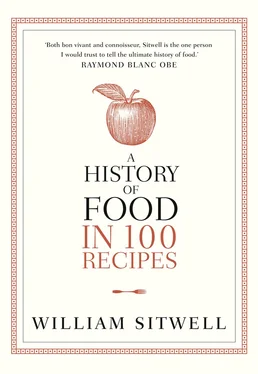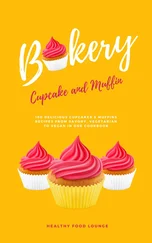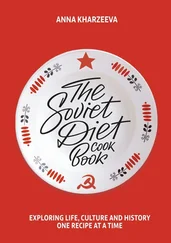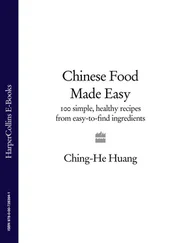Records show that in addition to bread, the ancient Egyptians enjoyed a diet rich in fruit, vegetables and poultry. They used herbs, from cumin to fenugreek, and that scenes of domestic cooking were considered important for the afterlife confirms that it was as vital a part of everyday life then as it is now.
2
Kanasu broth
(Meat and vegetable stew)
circa 1700 BC
AUTHOR: Unknown, FROM: The Babylonian Collection
Recipe 23, tablet A, 21 kinds of meat broth and four kinds of vegetable broth. Kanasu Broth. Leg of mutton is used. Prepare water add fat. Samidu; coriander; cumin; and kanasu. Assemble all the ingredients in the cooking vessel, and sprinkle with crushed garlic. Then blend into the pot suhutinnu and mint.
Does the average Iraqi wandering the banks of the Tigris, munching on a minced meat kubbah, realise that he or she is treading a patch of land that 4,000 years ago saw the birth of haute cuisine?
While the Middle Kingdom of ancient Egypt developed some of the rudiments of cooking, Mesopotamia, which occupied the patch between the Tigris and Euphrates rivers, became a gastronomically advanced civilisation. The land was fertile, more fertile than today. Indeed, the people had an extraordinarily diverse diet that featured many kinds of vegetable, including leeks, shallots, garlic, rocket, chickpeas, lentils, lettuce, peas, figs, pomegranates and much more. They ate a huge diversity of cheese, up to 300 different kinds of bread and an amazing variety of soup. A Mesopotamian’s supper of bread, soup and cheese might be rather more sophisticated than our own.
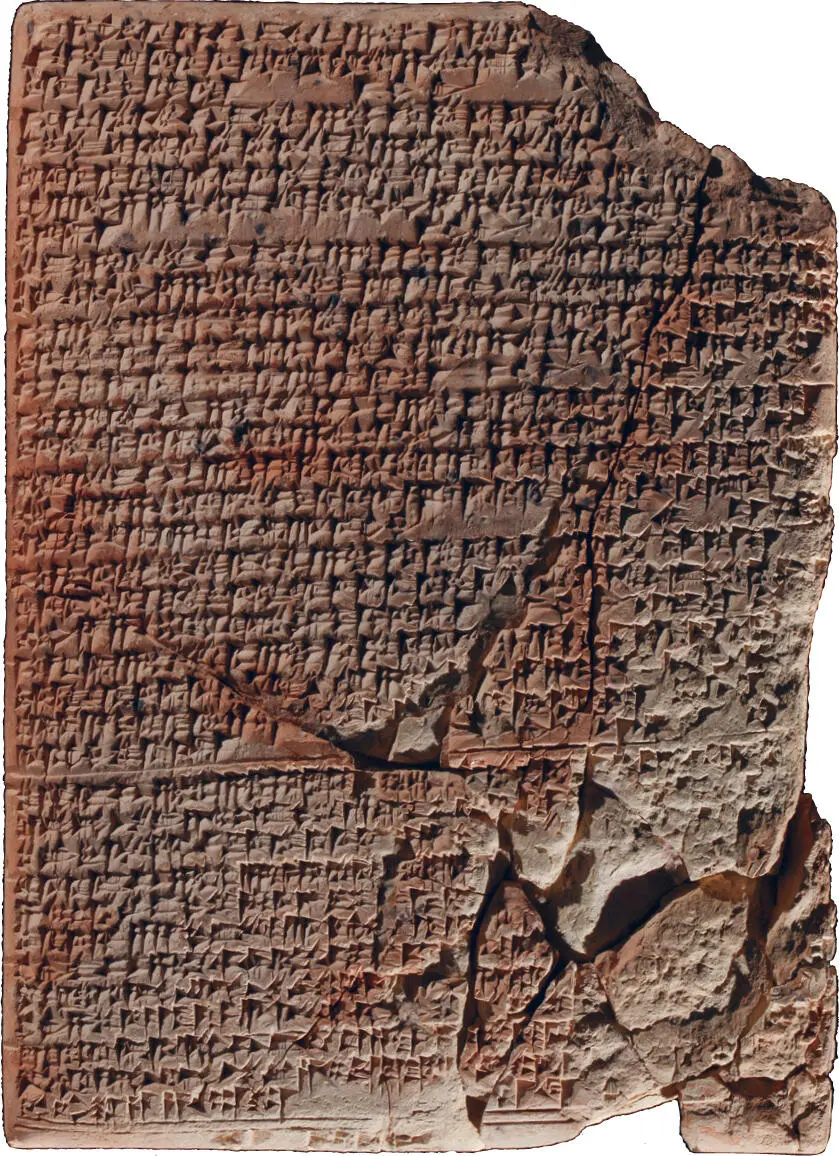
Yale Babylonian Collection
Recipe for Kanasu broth carved on a clay tablet.
We know all this from detailed records. But while today you might sketch out a recipe on a notepad, publish it in a book, put it online or on an iPhone app, in those days it was a rather more laborious process. Firstly, assuming you were a member of the rarefied and literate professional classes, you made a clay tablet, then, presumably while it was still wet, with a blunt reed stylus you slowly carved out your recipe in Akkadian cuneiform, an ancient pictorial precursor of alphabetic writing.
Many such stone tablets have lasted and survived more in less intact. At the New England University of Yale, a large number of tablets are stored as part of its Babylonian Collection, among some 40,000 artefacts acquired by the university in 1933. In an effort to preserve the tablets further, the curators had them baked and then had them copied. For many years it was assumed that the inscriptions were obscure pharmaceutical formulas but then French Assyriologist Jean Bottéro took a closer look, reporting his findings in 2004.
Focusing initially on three cracked, caramel-coloured tablets, he managed to decipher the code and on reading them discovered that they weren’t complicated equations, just recipes. The tablets revealed a rich variety of cuisine, moreover, a sophisticated mix of skill and artistry and a wonderful breadth of ingredients. Among the tablets, on a piece of clay measuring just 12 by 16 centimetres, is the recipe for kanasu broth.
Kanasu, ancient wheat – not dissimilar to durum – was mixed into a lamb stew as a thickener. Think of it as lamb casserole cooked with pearl barley. The recipe itself is brief, partly due to the time it would have taken to scratch it onto the clay and partly, as Bottéro believes, the recording of the dish constituted a kind of ritual. This wasn’t a recipe for the beginner, either: with no quantities or cooking times, it assumes a fair degree of culinary know-how.
The lamb stew is just one of twenty-one meat- and vegetable-based dishes, but it sounds a little tastier than some of the other recipes, such as one for braised turnips that begins: ‘Meat is not needed. Boil water. Throw fat in.’. Because many of the ingredients need some deciphering – samidu, for instance, was either semolina or fine white flour used for thickening, while suhutinnu was probably a root vegetable like a carrot or a parsnip – they can be hard to replicate in the modern kitchen. Indeed, having spent years deciphering the recipes, Bottéro – himself an accomplished cook – declared: ‘I would not wish such meals on any save my worst enemies.’ He may have been thinking of grasshoppers in a fermented sauce, which turns up in one of the tablets. By constrast, an editorial in the New Haven Register gave the thumbs up to Bottéro’s decoded recipe for kanasu broth, stating: ‘You can almost smell the 4,000-year-old leg of lamb bubbling in a sauce thick with mysterious Mesopotamian herbs.’.
While the dishes may not all be to the modern taste, the ingredients listed in the tablets are impressively varied, as are the various cooking techniques, suggesting that – given the number of tools required – these were dishes cooked in temples or palaces, rather than in the average home, in a mud hut, or cave, where equipment would have been rudimentary, to say the least. Recipes variously call for slicing, squeezing, pounding, steeping, shredding, marinating and straining. So even way back in the days when countries had eleven letters to their name, when people were inventing the wheel, reading the livers of chickens and believing that when you died you went underground and ate dirt, cooks were doing pretty much what most still do today.
3
Tiger nut sweets
circa 1400 BC
AUTHOR: Unknown, FROM: The Bible, Genesis 43: 11
And their father Israel said unto them, If it must be so now, do this; take of the best fruits in the land in your vessels, and carry down the man a present, a little balm, and a little honey, spices and myrrh, nuts and almonds.
Don’t think that food in prehistorical times was entirely savoury – all roasted lamb, flatbreads and chickpeas. After all they were human, just like you and me. And while I might crave a HobNob come four o’clock, so the ancients would have needed to sate their cravings for sweet things.
If we are to believe the story of Joseph’s rise to prominence in Egypt – and a large entertainment industry depends on it, or his colourful coat, to be precise – then archaeological evidence suggests he may have lived around 1700 bc.
According to the biblical account, after Joseph’s jealous brothers had forced him into exile – selling him as a slave to people travelling into Egypt – he rose in prominence partly due to his gift for interpreting dreams in which he advised the Pharoah to store up food during the good years, in anticipation of lean years to come. Sure enough those lean years came and people flocked from neighbouring countries to buy grain, including Joseph’s estranged brothers, looking for food to take back to famine-ravaged Canaan.
Joseph, rewarded with king-like status for his dream-interpreting and so grand now that they don’t recognise him as their long-lost brother, permits them to take food back to their family, saying that they can have more food but only if they return with their younger brother Benjamin. This they tell their father back home, who is suspicious at first but then relents. He then sends off his sons with advice and a few things in their pockets that unwittingly ensures him a place in A History of Food in 100 Recipes. For take a closer look at what he stuffs in those pockets: honey, spices, nuts and almonds. All the ingredients, in short, for tiger nuts.
No doubt he also popped a recipe for them in Benjamin’s top pocket. It was an early example of the tradition of taking a sweet gift to someone as a sign of appreciation or affection. Fragments of such a recipe exist on scraps of parchment from the same era and they are called tiger nuts because they resemble the tuber root of the same name. They are thought to be the earliest sweets and, with their sticky mix of honey, dates, sesame seeds and almonds – blended together and rolled into balls – are pretty nutritious too. Try them after dinner with a dark, black cup of intense coffee. And make sure to don a dressing gown or cloak decorated with a patchwork of colours, for added authenticity.
Читать дальше
